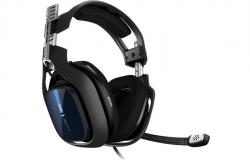Bipolar I Disorder: what is it?
We all have our ups and downs, but in the bipolar disorders these peaks and valleys are cyclical and so extreme, which can interfere with work or school performance, damage relationships, and disrupt your ability to function in daily life. Symptoms may come and go, but i bipolar disorders they often require permanent treatment for a better quality of life and do not disappear on their own.
The bipolar I disorder is a chronic mood disorder, characterized by one or more manic episodes over the course of a lifetime, which may be preceded or followed by hypomanic episodes or major depressive episodes, accompanied by periods of euthymic, i.e. “normal” mood (APA, 2014 ).
In the manic phase, it is common to experience symptoms of increased energy and euphoria, logorrhea, grandiose self-esteem, rapid succession of thoughts, difficulty concentrating, decreased need for sleep, and impulsive or risky behavior. The intensity of symptoms compromises the individual’s work, social and academic abilities and may even require hospitalization.
Hypomania is a less severe form of mania. Although the symptoms overlap between the two and are observable from the outside, the hypomanic phase lasts less than mania and does not significantly affect the person’s functioning.
Hypomania can lead to full-blown mania or be followed by a major depressive episode, in which the person experiences symptoms including depressed mood, inability to experience pleasure, irritability, fatigue, physical and mental slowness or agitation, difficulty concentrating, changes in appetite and weight, sleep disturbances, feelings of guilt and thoughts of death or suicide.
CBT for bipolar I disorder
The bipolar I disorder it not only influences mood, but also affects the ability to judge personal choices and events, leading to reckless and even life-threatening behavior. The therapeutic approach suggested by the research evidence is multidisciplinary (Goodwin et al., 2016) and includes pharmacological treatment, lifestyle changes and cognitive behavioral psychotherapy (CBT). CBT is a therapeutic approach that helps reduce the severity and duration of the symptomatic phases of bipolar I disorderresulting in less hospitalization and fewer abandonments of ongoing therapies (Özdel et al., 2021; Novick, Swartz, 2019).
It is based on the principle that thoughts, emotions and behaviors are closely connected: therefore, a change in mood can trigger negative thoughts that will influence our behavior. There CBT for bipolar I disorder it is a usually short-term psychotherapy, which develops in four phases: evaluation, psychoeducation, behavioral interventions and relapse prevention.
Phase 1 – Evaluation
Therapist and patient review the symptoms presented in the various episodes of the disorder, any triggering factors, the body’s physiological responses (sleep, appetite and energy levels) and behaviors typically implemented during the acute phases.
Phase 2 – Psychoeducation
It is the starting point for the actual treatment. Help people understand the nature of bipolar I disorder, its symptoms, biological bases and psychosocial factors that may impact it. In this phase, the patient learns to perform a monitoring daily of your mood to observe how mood swings can cause changes in emotions and behaviors, and distorted thoughts about your life. The patient will also be able to monitor their daily diet, sleep, physical exercise and correct medication intake.
Phase 3 – Behavioral interventions
Self-monitoring allows the person to catch the first “warning signs” of an imminent episode early, in order to intervene promptly on the symptoms and adapt their daily routines to activities useful for obtaining greater balance and stability of mood. Constant sleep habits, physical exercise, breathing exercises or meditation, pleasant and socially stimulating commitments (e.g. watching a film with a friend, a walk in the countryside) can be part of a real program of activities to implement to improve the quality of life.
Phase 4 – Relapse prevention
In the disorder bipolar type I, mania and depression are bound to recur. Factors such as stress, lack of sleep, substance use, and even poor diet increase the chances of another episode. If through self-monitoring you become aware of your specific patterns that link mood-emotions-thought-actions, you can learn to intervene in order to reduce the severity or duration of an episode.
How to live with bipolar I disorder
The bipolar I disorder it is a lifelong condition: it is therefore important to understand that when one episode ends, it is often only a matter of time before the next one appears. Intervene on bipolar symptoms involves reducing mood swings resulting from manic or depressive episodes, creating a list of danger signs, as well as a sort of “planned activity protocol” that the patient can follow to minimize the risk.
CBT, like any form of psychotherapy, is not effective if the person is in the course of a manic episode: the information acquired risks not being understood and not “taking root” on the level of awareness shown by the patient. It would be more appropriate to start one CBT for bipolar I disorder once drug therapy has been started or in the asymptomatic phase, involving the patient’s social support network.
A full life worth living (Linehan, 2021) is however possible: by following an integrated regimen of pharmacological and psychological therapy, a person with bipolar I disorder years can pass without symptomatic episodes.





